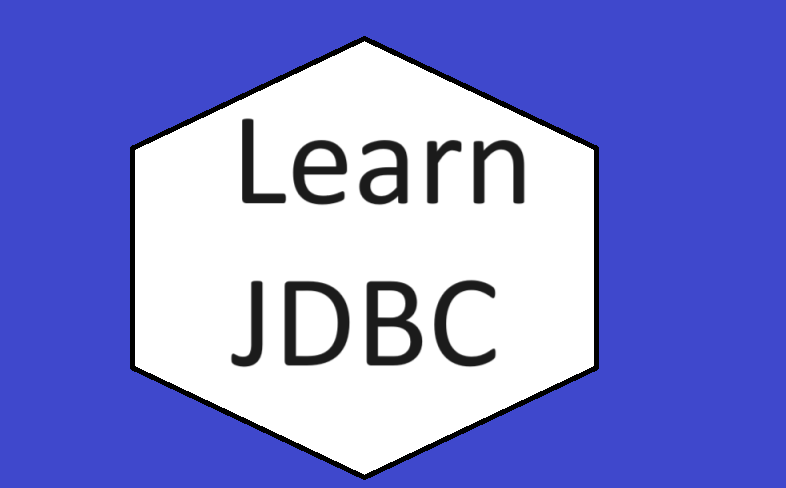JDBC stands for Java Database Connectivity.It’s a standard API (Application Programming Interface) provided by Oracle Corporation that enables Java applications to connect and interact with various relational databases.
JDBC acts as a bridge between the Java programming language and database management systems (DBMS).
-java.sql package contains a set of interfaces that specify the JDBC API.
Here are some key aspects of JDBC:
Database Independence: JDBC allows you to connect to different databases (e.g., MySQL, PostgreSQL, Oracle) using specific drivers without modifying your core Java code.Each database vendor provides a JDBC driver that translates JDBC calls into the specific dialect understood by that particular DBMS.
- Functionality: JDBC provides a set of classes and interfaces that allow you to:
- Establish connections to databases
- Execute SQL statements (queries and updates)
- Process and retrieve results from database queries
- Manage transactions (committing or rolling back changes)
- Close connections and release resources.
- Benefits: Using JDBC offers several advantages:
- Portability: Your Java database code can work with different databases by simply changing the JDBC driver.
- Standardization: JDBC provides a consistent way to interact with databases, reducing development complexity.
- Maturity: JDBC is a mature and well-established API, ensuring a wide range of tools and libraries that work seamlessly with it.
Using JDBC in a nutshell:
1.Load the JDBC driver: This involves loading the specific driver class for the database you want to connect to.
2.Establish a connection: Use the DriverManager class to create a connection object representing the connection to the database.
3.Create a statement: Use the Connection object to create a Statement object, which allows you to execute SQL statements.
4.Execute SQL statements: You can use the Statement object to execute queries (e.g., SELECT) or updates (e.g., INSERT, UPDATE, DELETE).
5.Process results (for queries): If you execute a query, you’ll typically use a ResultSet object to retrieve and iterate through the results.
6.Close resources: Always remember to close the ResultSet, Statement, and Connection objects when you’re finished to release resources properly.
In conclusion, JDBC is a fundamental tool for Java developers working with relational databases. Its standardized approach and database independence make it a powerful and versatile API for database interactions.
Deep Dive into JDBC Drivers: The Bridge Between Java and Databases
JDBC drivers are the heart of database connectivity in Java applications. They act as translators, converting the universal JDBC calls into the specific language understood by the target database management system (DBMS). Let’s delve deeper into different types of drivers and their characteristics:
Types of JDBC Drivers:
1.JDBC-ODBC Bridge Driver (Type 1 Driver):
- Least common today: This driver relies on a separate ODBC (Open Database Connectivity) driver to connect to the database.
- Limited portability: Requires a pre-installed ODBC driver for the specific database on the client machine.
- Performance overhead: Introduces an extra layer of translation, making it slower than other driver types.
2.Native-API Driver (Type 2 Driver):
- Direct communication: Connects directly to the database’s native API (application programming interface).
- Platform-specific: Requires a separate driver for each operating system and database combination.
- Less common: Not widely used due to the need for multiple drivers and potential compatibility issues.
3.Network Protocol Driver (Type 3 Driver):
- Client-server architecture: Connects to a database server process (like a daemon) that listens for requests on a specific network protocol (e.g., TCP/IP).
- Database-independent: Same driver can be used to connect to different databases as long as they have a compatible server process.
- Widely used: Popular option for many database vendors due to its portability and flexibility.
4.Thin Driver (Type 4 Driver):
- Pure Java implementation: Entirely written in Java, eliminating the need for native libraries or separate server processes.
- Highly portable: Works across different platforms without additional driver installations.
- Most common: The preferred choice for most modern Java database applications due to its ease of use and portability.
Here’s a basic JDBC example with an explanation:
import java.sql.;
public class JdbcExample {
public static void main(String[] args) throws Exception {
// Database connection details
String url = "jdbc:mysql://localhost:3306/your_database";
String username = "your_username";
String password = "your_password";
// Connect to the database
Connection connection = DriverManager.getConnection(url, username, password);
// Create a statement object
Statement statement = connection.createStatement();
// Execute a query
ResultSet resultSet = statement.executeQuery("SELECT FROM your_table");
// Process the results
while (resultSet.next()) {
int id = resultSet.getInt(1);
String name = resultSet.getString(2);
// ... process other columns
System.out.println("ID: " + id + ", Name: " + name);
}
// Close resources
resultSet.close();
statement.close();
connection.close();
}
}Explanation:
1.Import JDBC classes: We import necessary classes from the java.sql package to work with JDBC objects like Connection, Statement, and ResultSet.
2.Connection details: Define connection details like URL, username, and password for your specific database (e.g., MySQL in this case).
3.Connect to the database: Use DriverManager.getConnection() to establish a connection with the database using the provided details.
4.Create a statement: Use the connection.createStatement() method to create a Statement object. This object is used to execute SQL queries on the database.
5.Execute a query: The statement.executeQuery() method executes a SELECT query on the database and returns the results in a ResultSet object.
6.Process results: Use a while loop to iterate through the ResultSet. Inside the loop, use resultSet.getXXX() methods (e.g., getInt(), getString()) to access data based on column data types and positions (or names).
7.Close resources: It’s crucial to close the ResultSet, Statement, and Connection objects in a finally block (not shown here) to release resources properly.
In-depth explanation of concepts:
-JDBC Driver: A JDBC driver acts as a bridge between your Java application and the database. It translates JDBC calls into the specific dialect of the database you’re using (e.g., MySQL, Oracle, etc.). You’ll need to download and include the appropriate JDBC driver library for your database in your project.
-Connection: The Connection object represents a session with the database. It allows you to create statements, execute queries, and manage transactions.
-Statement: The Statement object is used to send SQL statements (SELECT, INSERT, UPDATE, DELETE) to the database. You can create different types of statements for specific purposes (e.g., PreparedStatement for parameterized queries).
-ResultSet: The ResultSet object holds the results of a SELECT query. It provides methods to navigate through the results and retrieve data by column index or name.
This is a basic example, but it demonstrates the core concepts of using JDBC to connect to a database, execute queries, and process results in a Java application.
Remember to replace placeholders like your_database, your_username, and your_password with your actual credentials. You can also modify the SQL query to interact with different tables and columns in your database.
Happy Learning..


